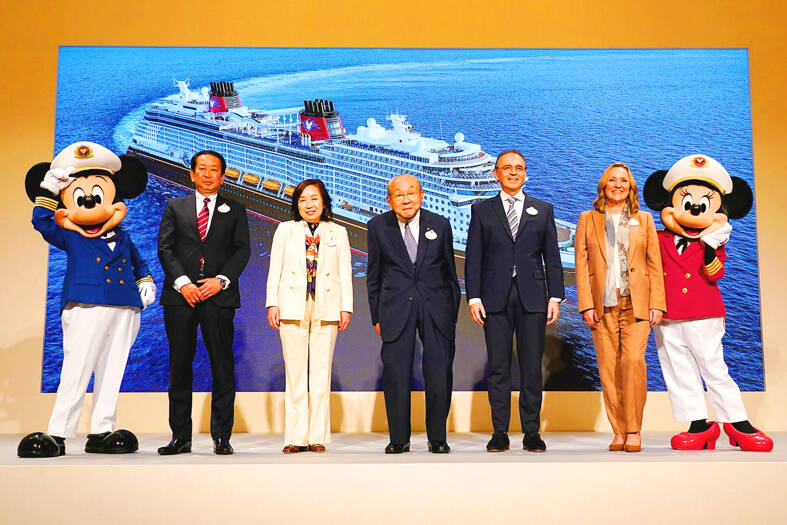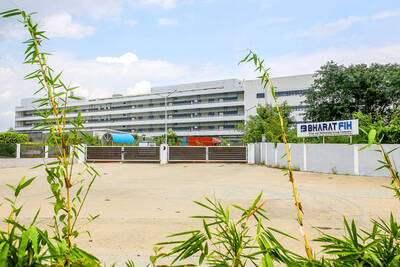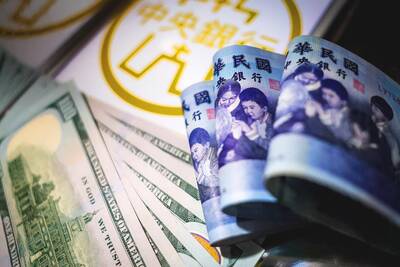Walt Disney Co yesterday unveiled plans to launch a new cruise ship to set sail from Tokyo starting in fiscal 2028, adding a ninth vessel to the brand’s growing fleet.
The new ship, to be modeled after the Wish, which is the largest vessel in the group, is a partnership with Oriental Land Co (OLC), the operator of Tokyo Disneyland. It is part of a 10-year, US$60 billion expansion of Disney’s theme parks and cruise business.
Disney has five cruise ships in operation. In addition to the Tokyo-based vessel, it has plans for three others, including one that is to set sail from Singapore next year.

Photo: Toru Hanai
The new Tokyo-based ship, whose name was not revealed, would have a maximum capacity of 4,000 passengers and is expected to bring in about ¥100 billion (US$621.77 million) in annual sales within several years of launch, OLC said.
“To set sail from Japan will make Disney vacations at sea more accessible to Japanese guests, who we know are some of our biggest fans,” Disney Signature Experiences president Thomas Mazloum told reporters.
The cruise line expansion comes as the industry is enjoying a rebound from a global shutdown during the COVID-19 pandemic.
The Cruise Lines International Association expects the number of passengers to reach 34.7 million this year, up 17 percent from 2019.
Disney’s experiences business, which includes its domestic and international parks and cruise line, accounted for more than one-third of the company’s revenue in the March quarter and nearly 60 percent of its operating income.
The company’s stock tumbled in May after chief financial officer Hugh Johnston warned about a “global moderation” in travel in the fiscal third quarter and other impacts, including higher wages and pre-opening expenses related to two of the new cruise ships and the new vacation island, Lookout Cay.
The rising tide for Disney’s cruise lines could help offset any softness in the company’s domestic theme park business, UBS analyst John Hodulik said.
The company said its second-quarter booking occupancy is at 97 percent for all five ships.
The rapid expansion of Disney’s cruise capacity “helps derisk the medium-term outlook” for the parks business, Hodulik said.
Disney’s other recent investments include three new areas at the Tokyo DisneySea theme park, recreating the worlds of Frozen, Tangled and Peter Pan, the opening of a Frozen-themed land at Hong Kong Disneyland and a Zootopia experience in Shanghai.
The company at its D23 fan convention next month is expected to announce plans for new attractions at Disneyland in California and Walt Disney World in central Florida.

SETBACK: Apple’s India iPhone push has been disrupted after Foxconn recalled hundreds of Chinese engineers, amid Beijing’s attempts to curb tech transfers Apple Inc assembly partner Hon Hai Precision Industry Co (鴻海精密), also known internationally as Foxconn Technology Group (富士康科技集團), has recalled about 300 Chinese engineers from a factory in India, the latest setback for the iPhone maker’s push to rapidly expand in the country. The extraction of Chinese workers from the factory of Yuzhan Technology (India) Private Ltd, a Hon Hai component unit, in southern Tamil Nadu state, is the second such move in a few months. The company has started flying in Taiwanese engineers to replace staff leaving, people familiar with the matter said, asking not to be named, as the

The prices of gasoline and diesel at domestic fuel stations are to rise NT$0.1 and NT$0.4 per liter this week respectively, after international crude oil prices rose last week, CPC Corp, Taiwan (台灣中油) and Formosa Petrochemical Corp (台塑石化) announced yesterday. Effective today, gasoline prices at CPC and Formosa stations are to rise to NT$27.3, NT$28.8 and NT$30.8 per liter for 92, 95 and 98-octane unleaded gasoline respectively, the companies said in separate statements. The price of premium diesel is to rise to NT$26.2 per liter at CPC stations and NT$26 at Formosa pumps, they said. The announcements came after international crude oil prices

DOLLAR SIGNS: The central bank rejected claims that the NT dollar had appreciated 10 percentage points more than the yen or the won against the greenback The New Taiwan dollar yesterday fell for a sixth day to its weakest level in three months, driven by equity-related outflows and reactions to an economics official’s exchange rate remarks. The NT dollar slid NT$0.197, or 0.65 percent, to close at NT$30.505 per US dollar, central bank data showed. The local currency has depreciated 1.97 percent so far this month, ranking as the weakest performer among Asian currencies. Dealers attributed the retreat to foreign investors wiring capital gains and dividends abroad after taking profit in local shares. They also pointed to reports that Washington might consider taking equity stakes in chipmakers, including Taiwan Semiconductor

A German company is putting used electric vehicle batteries to new use by stacking them into fridge-size units that homes and businesses can use to store their excess solar and wind energy. This week, the company Voltfang — which means “catching volts” — opened its first industrial site in Aachen, Germany, near the Belgian and Dutch borders. With about 100 staff, Voltfang says it is the biggest facility of its kind in Europe in the budding sector of refurbishing lithium-ion batteries. Its CEO David Oudsandji hopes it would help Europe’s biggest economy ween itself off fossil fuels and increasingly rely on climate-friendly renewables. While